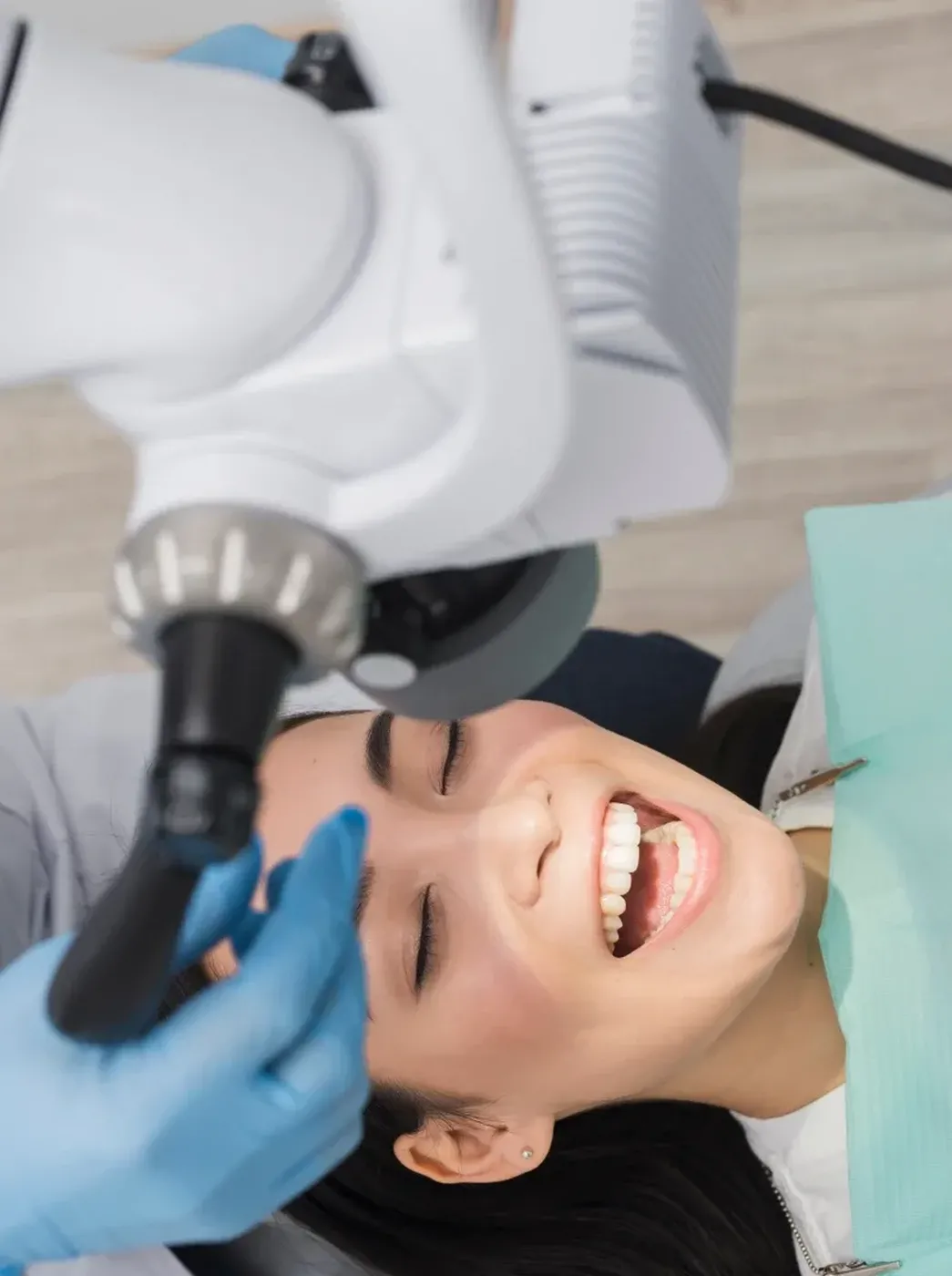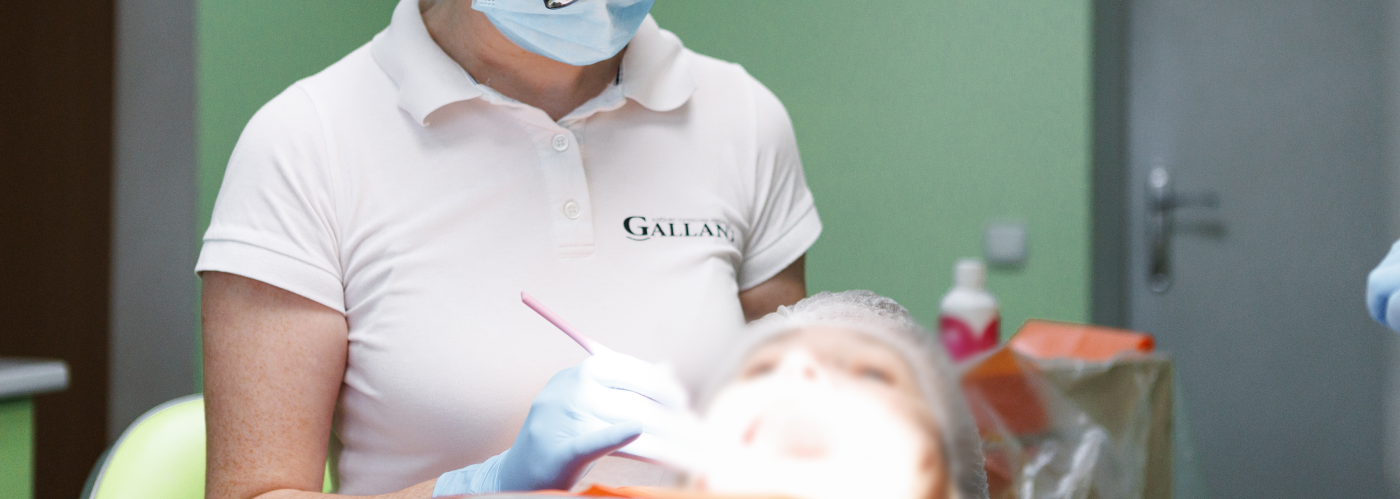
Pulpitis treatment
Pulpitis is an inflammation of the dental pulp, the soft inner tissue of the tooth that contains nerves and blood vessels. This condition can cause severe pain and, without proper treatment, lead to serious complications, including tooth loss.
Symptoms of Pulpitis
Pulpitis presents with various symptoms depending on the stage of the disease. The main signs are toothache, increased sensitivity to temperature stimuli, and changes in the structure or color of the tooth. Symptoms may be more pronounced in the acute form or less intense during the chronic stage of the condition.
Treatment of Acute Purulent Pulpitis
The acute form is accompanied by severe pain that worsens at night. The enamel also becomes sensitive to hot or cold food and drinks. Sometimes there is a throbbing sensation in the affected tooth.
Chronic Pulpitis
The chronic form is characterised by periodic discomfort that may be less intense. Pain or unpleasant sensations occur when pressure is applied. The enamel changes color and becomes darker.
Causes of pulpitis
Pulpitis can develop due to various factors, but the main causes are carious lesions and mechanical damage to the tooth surface.
Deep caries
Deep caries often occurs due to poor oral hygiene or excessive consumption of sugary foods. If untreated, bacteria penetrate deep into tissues, causing acute or chronic pulpitis. Infection enters the pulp through the carious cavity, causing inflammation.
Tooth trauma
Mechanical injuries such as fractures or cracks can open access for bacteria to the inner tooth tissues.
In addition, sudden temperature changes or chemical irritants (for example, frequent consumption of hot or cold foods, aggressive acids) can also damage the pulp.
Poor quality caries treatment
If caries treatment is not properly done - meaning infected tissues are not thoroughly cleaned - infection can spread.
Also, if the filling is not tightly sealed or low-quality materials are used, reinfection can occur. Poor treatment also includes continuous drilling of the tooth under anesthesia without proper cooling, which leads to overheating and pulp damage.
Diagnosis of pulpitis
To establish an accurate diagnosis, the dentist uses several examination methods. These help determine the degree of pulp damage and choose the best treatment approach.
Dental examination
The doctor performs a visual examination of the oral cavity. They check for carious cavities, changes in enamel color, and response to mechanical stimuli.
Dental X-ray
X-ray examination reveals what cannot be seen with the naked eye: the depth of damage and the condition of root canals. It also helps exclude other pathologies like periodontitis or cysts.
Pulp sensitivity tests
The doctor uses temperature or electric tests to determine pulp vitality. Cold stimuli or electric pulp testing help assess nerve response and determine the stage of inflammation.
Pulpitis treatment methods
Treatment aims to eliminate inflammation, preserve or remove affected pulp tissue, and restore tooth function. The choice of method depends on the disease stage and general condition.
Biological method
This is a conservative approach used in early stages when it is possible to save pulp vitality. Special medications are applied to stimulate tissue regeneration and prevent further inflammation.
Surgical treatment
This can include:
- Pulp amputation – removal of only the coronal part of the pulp, often used in children;
- Pulp extirpation – complete removal of pulp from the root canals followed by filling.
There is also laser treatment, a modern method that minimises infection risk, shortens recovery time, and promotes faster healing.
The cost of pulpitis treatment depends on the disease stage, individual characteristics, and complexity of therapy.
Features of pulpitis treatment in baby teeth
In children, baby teeth are also treated for pulpitis considering their structure and development. This prevents infection from spreading to periodontium and surrounding tissues. This ensures the permanent teeth grow properly and correct bite formation.
Complications of pulpitis
If not treated timely, pulpitis can lead to:
- Periodontitis – inflammation of tissues around the root;
- Abscess and phlegmon – accumulation of pus;
- Tooth loss and need for expensive prosthetics or implantation.
Infection can also spread easily to adjacent teeth through the roots in a shared blood and lymphatic system.
Pulpitis prevention
By following basic oral hygiene rules, pulpitis can be prevented. Main recommendations include:
- Regular oral hygiene: brushing twice a day, using dental floss and mouth rinses;
- Visiting the dentist every six months for preventive check-ups;
- Treating caries at early stages.
Do not delay treatment to avoid complicated, lengthy, and costly recovery.
What to do if you have pain?
Pulpitis pain can be very intense and interfere with daily life. It is important to know how to temporarily reduce discomfort before seeing a dentist and which actions to avoid so as not to worsen the situation.
How to temporarily relieve pain at home?
Taking painkillers such as ibuprofen or paracetamol can reduce pain. Rinsing the mouth with antiseptic solutions (e.g., chlorhexidine or chamomile infusion) helps reduce inflammation. However, these are temporary measures, so treatment should be done as soon as possible.
What not to do?
Do not apply heat to the affected area, as warmth promotes infection spread and worsens inflammation. Also, do not apply aspirin directly to the tooth, as it can cause chemical burns to the mucous membrane.
Conclusion
At Gallant Clinic, we use modern methods to treat purulent pulpitis. Thanks to our specialists’ experience, patients receive quick recovery and comfort during painless procedures.
You can learn about the cost of pulpitis treatment during a consultation with a doctor. Book your appointment today to maintain your dental health!
Request a call
We will contact you to schedule a convenient time for your consultation and connect you with the right specialist
What are the indications for pulpitis treatment?
Regular dental visits: preventive check-ups to monitor the condition of teeth and gums, as well as timely detection and treatment of potential complications.

How many days does pulpitis treatment take?
The acute stage of pulpitis is treated within 2 days to 2 weeks. If left untreated, acute pulpitis can become chronic, requiring more time for treatment.

What is pulpitis?
Pulpitis is an acute or chronic inflammation of the tooth’s soft tissues, caused by bacteria entering the dental pulp through a carious cavity.

What are the indications for pulpitis treatment?
- Acute toothache
- Increased tooth sensitivity to temperature changes
- Swelling and inflammation of the gums around the affected tooth
- Presence of pus in the oral cavity

Testimonials
Gallant Dental Clinic is the best thing that’s ever happened to my teeth! Dr. Viktor Sushkov is a true professional in his field! Friendly administrators are always ready to help, explain everything clearly, and find the best time for your visit! I definitely recommend this clinic!
I regularly use the services of Gallant Dental Clinic, thank you for the high-quality care. Special thanks to my doctors: Dr. Nataliia Verpeta and Nataliia Musa.


Request a call
We will contact you to schedule a convenient time for your consultation and connect you with the right specialist

Request a call
We’ll get back to you shortly!

Leave a Review
Your feedback means a lot to us!


